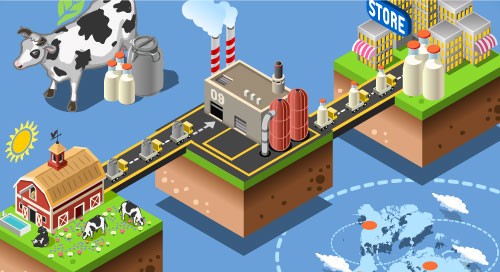It’s something that I’m pretty sure we’ve all been guilty of. Our shopping carts are bigger than our stomachs, and as much as we think we’re going to use every last bit of what we put in those carts, we end up tossing rotting produce out of the fridge or moldy bread out of the breadbox. In my house, we’re pretty careful, but there are still times when we’re throwing things out. What a waste.
At the personal level, it’s a waste of money. But when you look at it in the aggregate, the costs really mount up. There are the financial costs:
About one-third of the food produced and packaged for human consumption is lost or wasted, according to the Food and Agriculture Organization of the United Nations. That equals 1.3 billion tons a year, worth nearly $680 billion. (Source: NY Times)
That’s bad news, especially when you consider that there are millions of people around the world who don’t get enough nourishing food. Other bad news? Wasted food negatively impacts climate change.
From 8 to 10 percent of greenhouse gas emissions are related to food lost during harvest and production or wasted by consumers, recent report by the Intergovernmental Panel on Climate Change found. Landfills of rotting food emit methane, a gas that is roughly 25 times more harmful than carbon dioxide. And to harvest and transport all that wasted food requires billions of acres of arable land, trillions of gallons of water and vast amounts of fossil fuels.
Maybe those smart refrigerators can help us on the home front, but there’s also a great deal of food waste that occurs in stores. Some stores, primarily in Europe, are using “food rescue” apps to connect shoppers to food – meat, produce, dairy – that’s about to expire, and offering them steep discounts on it.
There are also apps – and entire systems -being developed on a much larger scale. These let food producers keep an eye on their products every step of the way, from the farm or ranch to the refrigerator case in the grocery store. “Cold-chain monitoring solutions” that are part of the IoT do this, and could theoretically “save the more than 1.2 billion tons of food that due to spoilage never reaches the consumer annually.”
For example, with meat producers, it starts with healthy livestock. IoT sensors measure environmental conditions such as temperature and humidity. Animal movement, location, and health can be monitored. And the producer can take immediate action in unusual situations: relocate livestock, adjust for heat and humidity, even test for illness.
With sensors, AI, and cloud analytics, conditions can be monitored and acted on throughout the supply chain—from transport, to processing, to the cold case. (Source: Insight.Tech)
A monitoring app can “inspect” food throughout the supply chain, keeping tabs on (and analyzing) data such as temperature, humidity, and location. Alerts are triggered, and adjustments can be made – all in real time.
I occasionally have a bit of fun with apps that don’t really seem to solve any problem that matters. (A good example of this is my last posts, which was on smart diapers.) But there are so many other apps that can really change the world for the better. Helping cut down on food waste is one area where there’s the potential for a powerful and critical pay-off.

